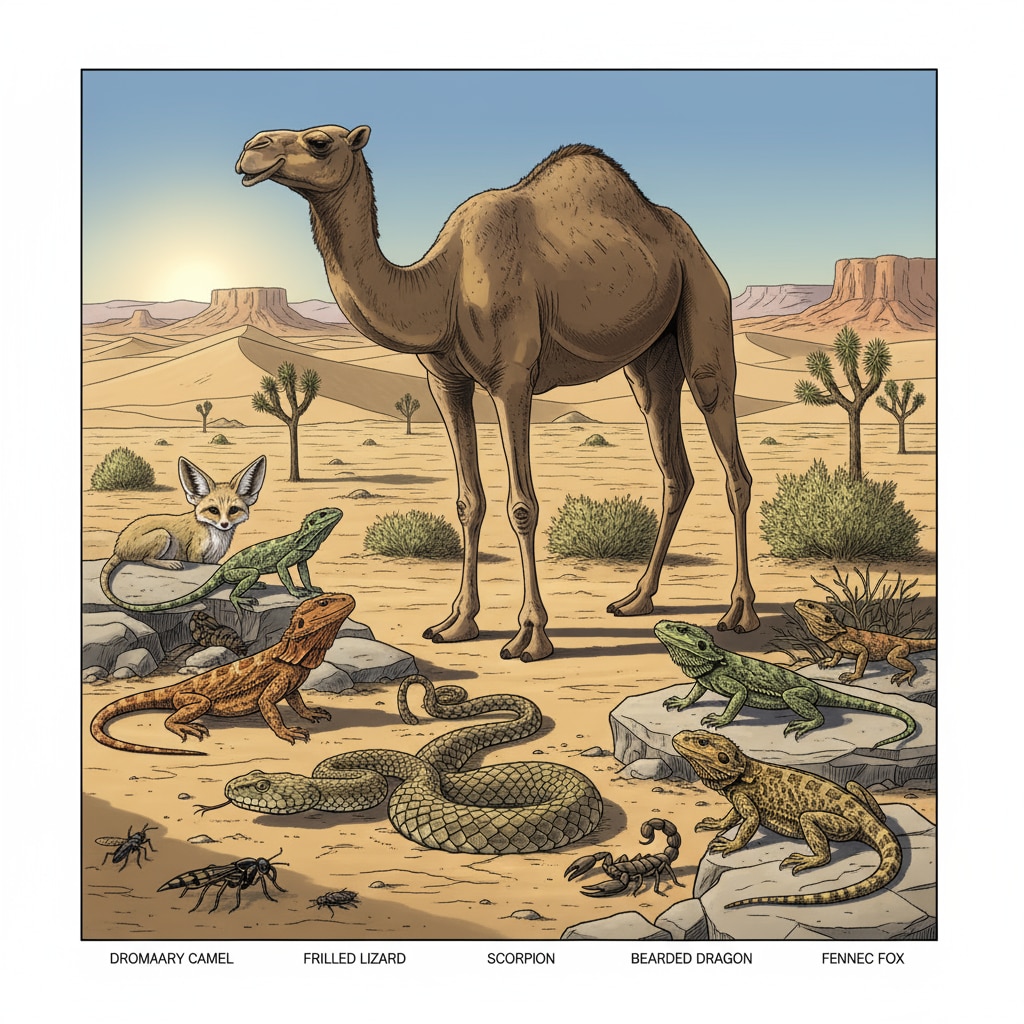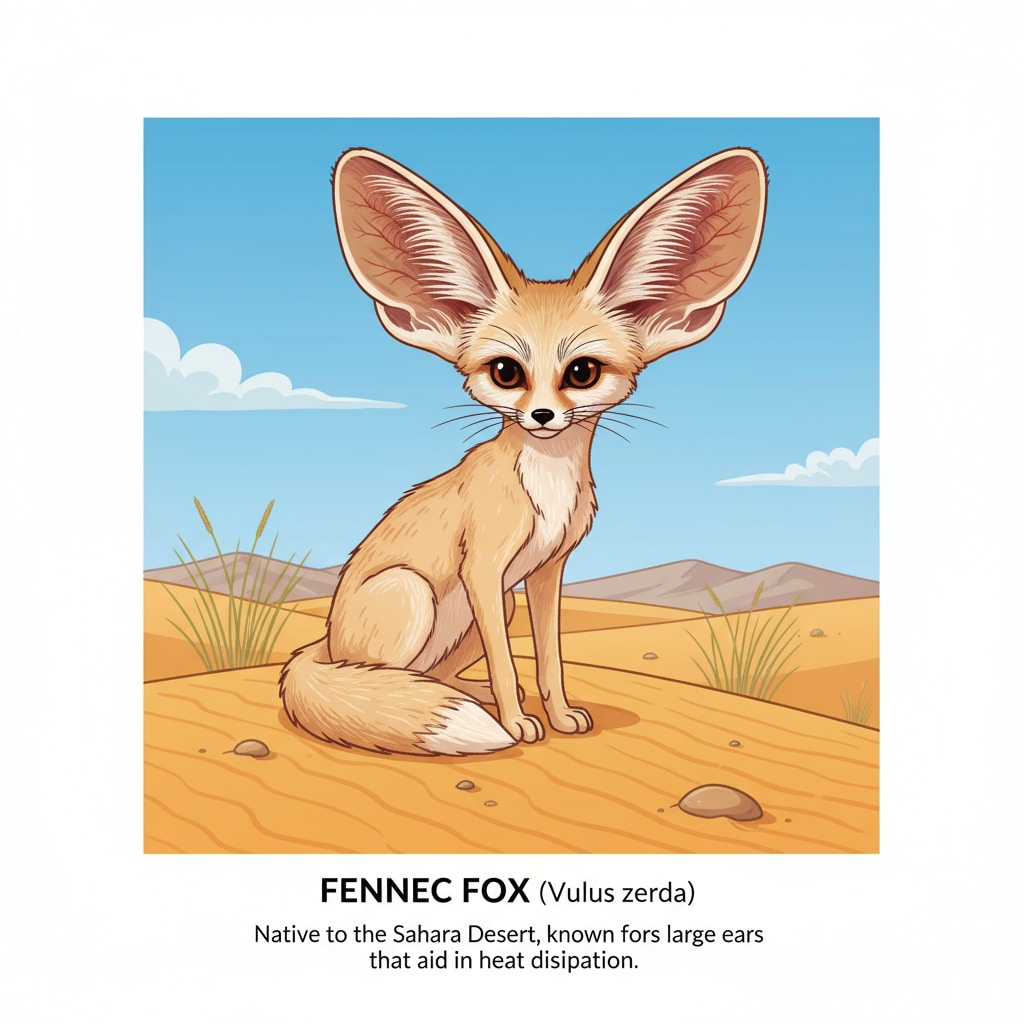Desert animals, with their remarkable evolutionary adaptations and survival mechanisms, offer a wealth of knowledge that can be effectively integrated into K12 biology education. These creatures have evolved unique traits to thrive in one of the harshest environments on Earth.

For instance, the camel, often referred to as the “ship of the desert,” has several adaptations that enable it to survive in the desert. Its hump stores fat, which can be broken down into water and energy during long periods without food or water. This is a prime example of how desert animals have evolved to meet the challenges of their environment.
Physical Adaptations for Survival
Many desert animals have physical characteristics that help them cope with the extreme heat and lack of water. For example, the fennec fox has large ears. These ears serve a dual purpose. Firstly, they act as radiators, dissipating heat from the body. Secondly, they enhance the fox’s hearing, allowing it to detect prey even in the sandy desert. Another example is the sand gazelle. It has long, slender legs that help it move quickly across the sandy terrain and also keep its body away from the hot ground.

In addition, some desert reptiles, like the horned lizard, have specialized skin that can absorb and store water, which is crucial for survival in a water-scarce environment. According to Wikipedia’s Desert Ecosystem page, these physical adaptations are the result of millions of years of evolution.
Behavioral Adaptations for Survival
Desert animals also exhibit a range of behavioral adaptations. Nocturnal behavior is common among many desert species. Creatures such as the kangaroo rat are active at night when the temperatures are cooler. This helps them avoid the intense heat of the day. During the day, they retreat to burrows, which provide a cooler and more humid microclimate. Some desert animals also have unique ways of obtaining water. The Thorny Devil, for example, has a specialized skin that channels water towards its mouth. It can gather water from dew or even from small rain showers. As stated on Britannica’s Desert Animal page, these behavioral adaptations are essential for their survival in the desert ecosystem.
Integrating these examples of desert animals’ adaptations into K12 biology education can have a profound impact. It can make the subject more engaging and relatable for students. By studying these real-life examples, students can better understand the concepts of evolution and adaptation. They can also develop an appreciation for the complexity of nature and the importance of protecting these unique ecosystems. In conclusion, the study of desert animals’ evolutionary adaptations and survival mechanisms is not only fascinating but also a valuable tool for K12 biology education.
Readability guidance: The key points are presented in short paragraphs and lists. Each H2 section has a list of examples. The proportion of passive voice and long sentences is controlled, and transition words are used throughout the text to enhance readability.


